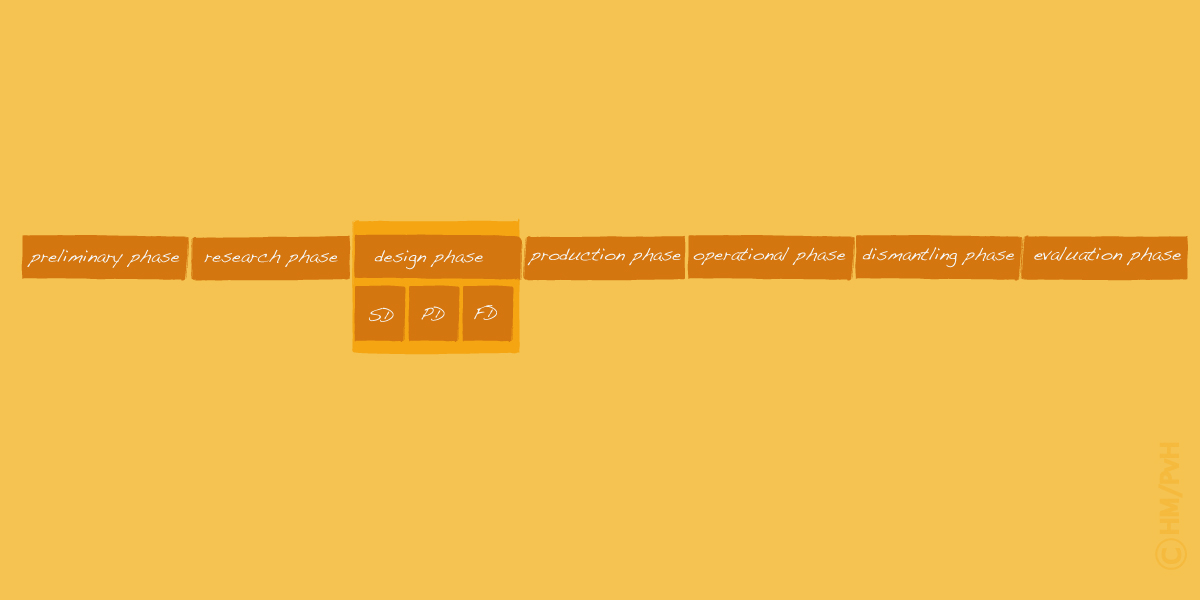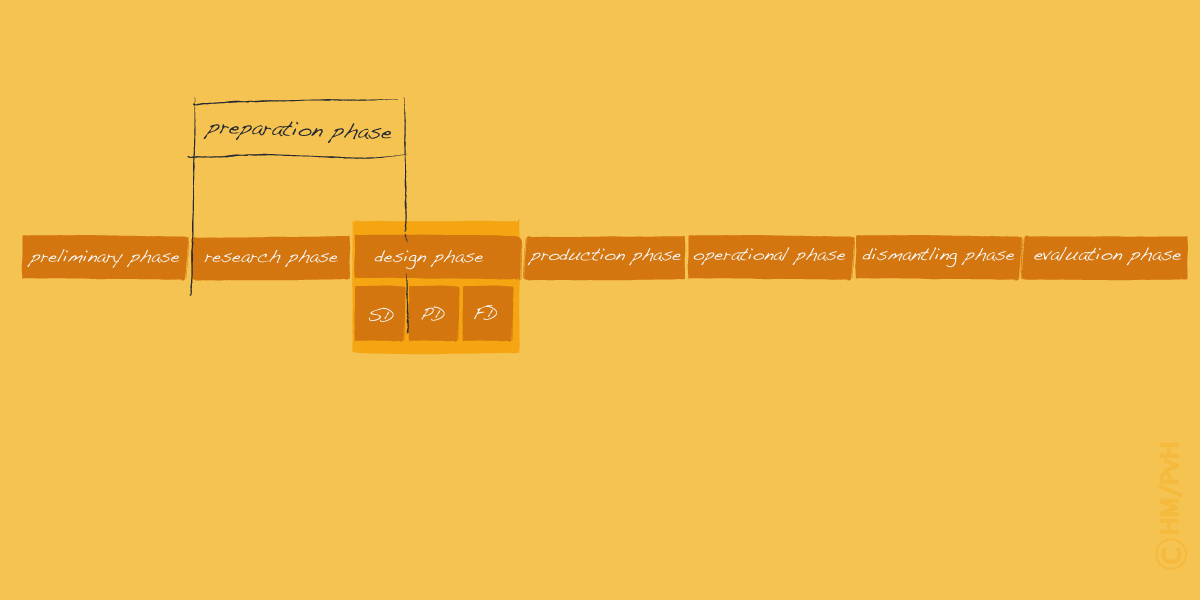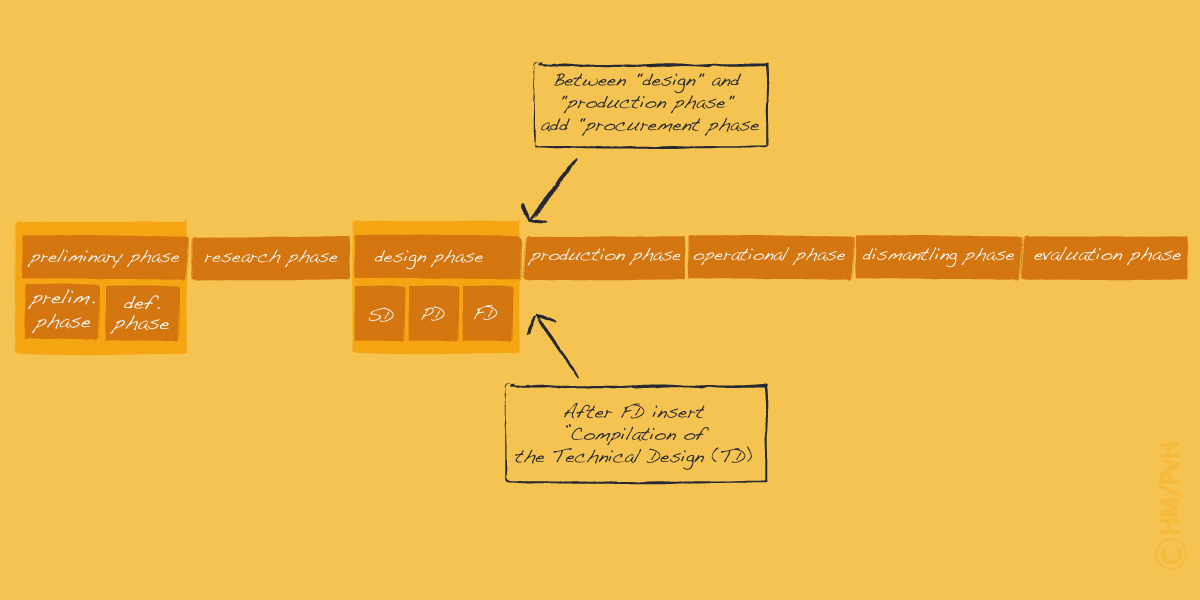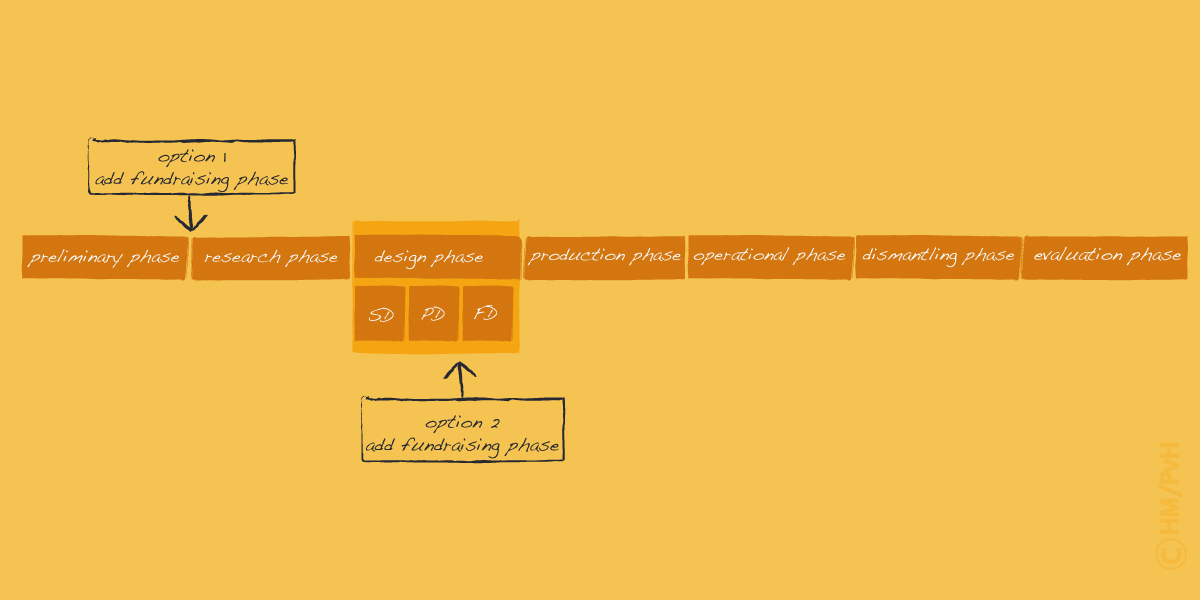Introduction to Phasing
Introduction
In order to get from an idea to a concrete project result and for the process to run smoothly, it is necessary to divide the process into phases. The standard phasing described in the Introduction to Project Management has been chosen here as the starting point. This standard phasing is based on that of Twynstra Gudde, a project management specialised consultancy, and has also been applied by other authors in the field of project management, such as Grit1. This standard model has been adapted on this website to a special type of projects, that is exhibitions.
In recent years, several models have been proposed for the development process of exhibitions, some of which are based entirely or partially on the Project Model Exhibitions. An example of the latter is the model that Dirk Houtgraaf and Vanda Vitali promoted in the publication Mastering a Museum Plan2.
The proposed project model is based on a so-called cascade or waterfall method and comes from the construction industry. It is so named because the project is organised as a linear process in which each phase is first completed before the next phase starts. Within this structure, the design process has an iterative, cyclical character. Besides putting the phases in the right order does not automatically guarantee a success. It is simply a tool to structure the process. Each phase is in fact a scale model of the entire process. Even in the research phase there is a inquiry stage, an elaboration phase and a presentation phase. This also applies to the design phase, which is also researched, elaborated and presented. The difference between the phases is in focus and depth says van Blokland. In summary he states:
“when a process is defined as linear there is no possibility for the later stages offering feedback on the earlier ones. Therefore it is only a simple model. Reality is always much more diverse and iterative“3
Since we are focusing primarily on the development of narrative-led exhibitions, we are limited to the type of projects within the complicated domain as defined in Dave Snowden’s Cynefin framework. These are projects where the relationship between cause and effect must be analysed or those which require some other form of investigation or the application of an expert’s knowledge. These are projects based on applying good practice. In fact, the reason behind this website.
Phasing
In this model, the following basic phases are proposed:
- Preliminary phase
- Research phase
- Design phase; divided into the following three sub-phases:
- Composition of Sketch Design (SD)
- Composition Provisional Design (PD)
- Composition Final Design (FD)
- Production phase
- Operational phase
- Dismantling phase
- Evaluation phase
The scheme below shows a diagrammatic overview of the phases. These phases are explained in the website.
Variations
Depending on the nature of each project, phases should be adapted to fit the situation, thereby allowing the project to run smoothly and logically. Listed below are some common variants on the proposed project model for exhibitions.
Variation for Small Projects
In this variant the Research phase and the Design phase SD are combined for reasons of efficiency. This is particularly reasonable if working with a project team where the designer plays a part from the start of the project, which is what is recommended here. In this way the preparation for the thematic research can be combined with the preparation of the design of the exhibition, such as making good floor plans for the exhibition space(s), drawing in available facilities such as electricity, climatological and alarm systems etc. On the basis of initial results from the thematic research, the first ideas can then be developed for the design of the exhibition (the sketch design). Because all of these activities have a preparatory character, this, together with the content, is called the Preparation phase.
For smaller exhibitions organised by galleries, a large part of the Production Phase is often omitted. The artist hangs or places his works by himself or together with the gallery owner making use of the facilities available at the gallery, such as panels, showcases and lighting. In this type of exhibition there is also often minimal or no mention of a design phase. Often choices about how best to place the artwork in the exhibition space are made by trial and error on-site.
Variation for Large Projects
For large projects or projects with a long lead time it may be useful or necessary even to supplement the Preliminary Phase with a Definition Phase. These two phases are combined in the standard model for reasons of efficiency. Exhibition projects are generally not so large that a separate definition phase is necessary.
In larger and/or complicated technical projects it is useful or necessary even — certainly when detailed procurement procedures have to be followed — for the technical aspects not to be included in the Final Design (FD). In this case it is better to make a separate design in the form of a Technical Design (TD). In this approach, after completion of the Design Phase with the aforementioned TD, a “procurement phase” is added to the beginning of the Production Phase.
Variation for a Project with Fundraising
In many projects, fundraising is part of the exhibition process. Given the time-consuming and uncertain nature of this it is worth adding a separate phase for this purpose. It is useful to do this in one of the following two junctures in the exhibition process. The first one is between the Preliminary and Research Phase. The fundraising then takes place on the basis of the general description of the project as shown in the result of the first phase, the Preliminary Report. The second moment is between the phase of composing the Provisional Design (PD) and the Final Design (FD). When the fundraising takes place here it is based on the much more detailed description of the project as shown in the PD.
The advantage of doing this at the first juncture is that only a relatively small investment has to be made in only the costs of compiling the Preliminary Report. The disadvantage of this approach is that it only gives a very rough picture of the project. In practice, many funding bodies or other lenders want to know more details about what the project will look like before they feel able to contribute. Moreover, many funding bodies require that institutions themselves also make a substantial investment in the projects undertaken by them. The second juncture overcomes these problems. The PD gives a much more detailed picture of the final product. It can also be quite well estimated. The application is therefore more detailed and can be substantiated.
There are of course other conceivable variations in-between. For example, an initial fundraising phase based on the Preliminary Report which focuses on bringing together the resources for the content phase and the composition of the SD and PD. Based on what has been established with these means, PD is then followed by a second fundraising campaign to bring together finances for the rest of the project. In fact, the first phase involves taking on an investment risk. If the second fundraising phase fails this investment will not result in an immediate result.
Plan of Action
The document in which the chosen project phasing is determined is the Action Plan. Where necessary, this is supported by reasons why certain stages are added or combined. This plan also indicates where go and no-go moments are located in relation to the start of the next phase.



